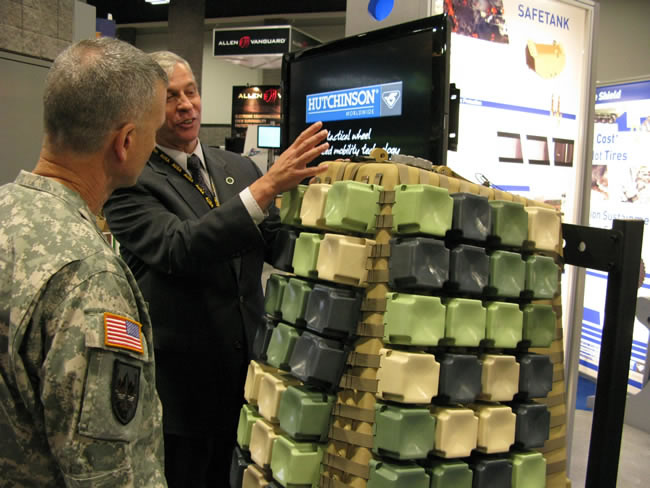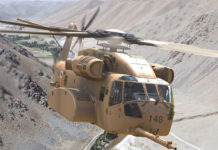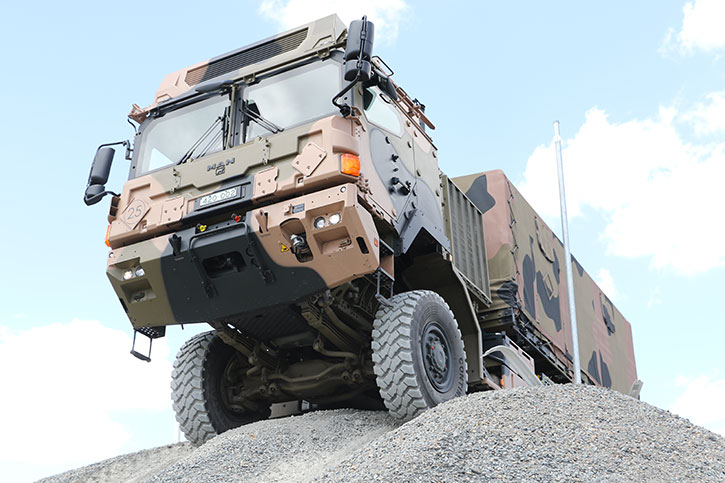

Fires in combat vehicles can be caused by combat damage (hit by enemy fire, IEDs or a fire bomb thrown at it) or accidentally, by the crew or by malfunction. Regardless of the cause, fire erupting in the engine or fighting compartment can cause significant damage, leading to catastrophic effect if the ammunition begins to explodes. To quickly put out such fires, automatic fire suppression systems are used, employing different methods in each zone – crew compartment, engine, tires, fuel tank, battery or outer envelope. Multi-zone systems are important to minimize subjecting the crew and passengers to toxic fumes of smoke and fire extinguishing materials.
For example, the use of ‘Clean Agent’ that effectively suppress the fire and prevents explosion, but requires rapid evacuation of the crew. Operations in asymmetric warfare often expose vehicles to fire hazards from molotov cocktails or IEDs that do not penetrate the armor. Therefore, having a fire suppression system that mandate the evacuation of the protected vehicle poses an unnecessary risk.
To equip MRAP and other tactical vehicles Nitrogen based (N2) and water-vapour fire suppression are employed to quickly choke out the fire without affecting the human occupants. Alternatively, water mist can be used to suppress fire and keep temperature down, allowing the crew more time to respond.
Particularly effective in protecting security and law enforcement vehicles as well as the military, operating in asymmetric conflict, are fire suppression for vulnerable parts such as fuel tanks and tires. The Israeli company LVT has developed tire fire suppression system combined into AAFS installed in MRAP-type vehicles. LVT has delivered over 3,000 fire suppression systems protecting MaxxPro MRAP vehicles. Typically, such systems equip the crew compartment with fire suppression agents to shield crew, provides outer body protection, against fire bombs and explosives and uses high performance extinguishing agent to protect the tires in case they catch fire. Separated from the crew compartment the engine and Battery compartments are protected by a clean agent fire suppression system. Fuel tank protected against fire caused by Molotov cocktails or IEDs.
Vulnerable elements of the vehicle, such as hydraulics or fuel tanks, require special attention in armor protection. At the recent AUSA 2012 exhibition Hutchinsons’ Rodgard Mobility Solutions unveiled several new systems protecting fuel tanks from small arms fire and shrapnel and punctures caused by artillery and mortar fire, mines or IEDs. For example, the Safetank system seals the damaged tank, maintaining the veicle’s mobility and reducing the risk of sympathetic explosion of ammo and eliminating loss of fuel or the risk of potential ignition of spilled fuel.

Safetank is applied as a coating around the container, protecting against small arms fire of up to 7.62 NATO/AP, 50 cal/12.7mm and 14.5 mm rounds. Moreover, the tank itself can be filled with anti-explosion foam or mesh inserts to minimize risks of electrical short circuits igniting vapor explosions. An outer layer of flame retardant prevents fires from spreading, eliminating overheating of the fuel in the protected container. The use of Safetank eliminates the need to protect fuel tanks with much heavier armor plates, thus saving up to 100 kg per vehicle. It can also protect large tankers transporting up to 5,000 gallons.
















